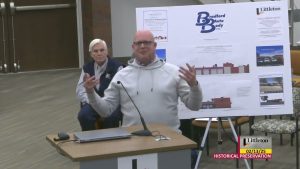Greetings, Colorado homeowners! Your roof is one of the most important components of your home. It protects you from the elements and enhances the overall aesthetic appeal. As such, it’s crucial to keep it in top shape through regular maintenance. In this article, we will provide you with essential roof maintenance tips that will help you keep your roof in excellent condition for years to come.
The Colorado climate can be harsh, with heavy snowfalls, high winds, hailstorms, and extreme temperature fluctuations. These factors can take a toll on your roof, making regular maintenance even more crucial. By following the tips we will provide, you can extend the longevity of your roof, prevent costly repairs, and keep your home safe from potential water damage.
Understanding the Colorado Climate and its Impact on Roofing
Colorado is known for its diverse climate, ranging from sunny days to torrential rain, strong winds, snow and hail. These weather conditions can be harsh on roofs, causing damage and reducing their lifespan. To maintain the roof’s longevity, homeowners must understand the unique challenges that come with Colorado’s climate and take appropriate measures to mitigate them. Here is a roofing maintenance checklist tailored for Colorado homeowners:
| Weather condition | Checklist for Roof Maintenance |
|---|---|
| Snowfall | Regularly clear snow from the roof to prevent ice dam formation, which can lead to leaks and water damage. |
| High winds | Inspect the roof for loose or missing shingles and have them repaired or replaced immediately. Trim branches near the roof to prevent them from falling and damaging it. |
| Hailstorms | Install impact-resistant roofing materials, such as metal or asphalt shingles, as they can withstand hail damage. Inspect the roof after a hailstorm and have any damage repaired promptly. |
| Extreme temperature fluctuations | Ensure proper ventilation in the attic to prevent moisture buildup and premature deterioration of the roof. Inspect the roof regularly for cracks and gaps that can let air in or out, and have them sealed accordingly. |
By following this checklist regularly, homeowners can ensure that their roof is in good condition and avoid costly repairs or replacements.
Conducting Regular Roof Inspections
Regular roof inspections are essential for maintaining a healthy and long-lasting roof. It is recommended that homeowners inspect their roofs at least once a year, and more frequently if there have been severe weather events. A thorough inspection will help identify any signs of damage or wear that need immediate attention.
Step-by-Step Guidelines for Conducting a Roof Inspection
| Step | Description |
|---|---|
| 1 | Start by inspecting the roof from the ground. Look for any visible signs of damage, such as missing or damaged shingles, cracked tiles, or warped metal panels. |
| 2 | Use binoculars to get a closer look at the roof. Pay attention to areas around chimneys, vents, and skylights, as these are common areas for leaks. |
| 3 | Climb onto the roof (if safe to do so) to inspect it more closely. Look for signs of wear and tear, such as cracks or holes in the roof surface, damaged flashing, or clogged gutters. |
| 4 | If you notice any signs of damage, it is recommended to contact a professional roofer to assess and repair the issue. |
Some common signs of roof damage or wear include:
- Cracked or missing shingles or tiles
- Bald spots where granules have worn away
- Sagging or warping of the roof surface
- Clogged gutters and downspouts
- Water stains on the ceiling or walls
By conducting regular roof inspections, homeowners can catch any potential issues early on and prevent them from becoming more severe and costly to repair.
Maintaining a Clear Roof: Tips to Keep Your Roof Debris-Free and Healthy
Cleaning and clearing debris from your roof is an essential aspect of roof maintenance that is often overlooked. Regular removal of debris is crucial to prevent water damage, keep your gutters and downspouts clear, and extend the lifespan of your roof. Here are some tips to help you properly clean and clear your roof:
1. Time it right
It is best to clean your roof during the cooler hours of the day to prevent the sun from drying out the cleaning solution too quickly. Avoid cleaning your roof during wet or windy weather to prevent slips and accidents.
2. Use the right tools
Use a sturdy ladder to climb up to your roof and wear slip-resistant shoes or boots. Use a leaf blower or a soft-bristled broom to remove loose debris, and a garden hose to gently wash down your roof. Avoid using a pressure washer, as it can damage shingles and tiles.
3. Be thorough
Clear any accumulated debris from valleys, gutters, and downspouts, as these are areas where water can accumulate and cause damage. Trim overhanging tree branches to prevent leaves and twigs from falling onto your roof.
4. Check for damage
While you are cleaning your roof, take the opportunity to check for any signs of damage or wear. Look for cracked or missing shingles, damaged flashing, or any other visible damage. Address any issues promptly to prevent further damage or leaks.
5. Consider hiring a professional
If you are uncomfortable climbing onto your roof or are unsure about how to properly clean and clear it, consider hiring a professional roofing contractor. They have the expertise and equipment to safely and effectively clean your roof, as well as identify and address any issues that need attention.
Maintaining Proper Ventilation
Proper ventilation is essential for maintaining a healthy roof. Adequate airflow can prevent moisture buildup, mold growth, and premature deterioration.
Here are some tips for ensuring proper attic ventilation:
- Check that vents are not blocked or covered by insulation, debris, or snow.
- Ensure that insulation is not blocking soffit vents, which allow air to enter the attic.
- Consider installing roof vents, such as ridge vents or gable vents, if your attic has insufficient ventilation.
By maintaining proper ventilation, you can help protect your roof and extend its lifespan.
Addressing Roof Repairs Promptly
While regular maintenance can prevent many roofing issues, some problems may still arise that require repairs. It’s important to address these issues promptly to avoid more extensive damage and costly repairs down the line.
If you notice any signs of damage, such as leaks, missing or damaged shingles, or cracking in the roof, it’s crucial to take action right away. Ignoring these issues can lead to water infiltration, mold growth, and other problems that can compromise the integrity of your roof.
If you’re comfortable with DIY repairs, you can address some minor issues on your own. However, for more complex repairs or if you’re unsure of your ability to safely navigate the roof, it’s best to call in a professional roofer. They can assess the problem and recommend the best course of action to prevent further damage and ensure your roof remains in good condition.
Protecting Against Ice Dams
During the winter months, Colorado homeowners may face a common roofing problem – ice dams. These occur when melted snow refreezes at the edge of the roof, preventing water from draining properly.
Ice dams can cause serious damage to your roof, including leaks and shingle damage, so it’s important to take steps to prevent and remove them.
| Prevention | Removal |
|---|---|
|
|
By taking these steps to prevent and remove ice dams, you can protect your roof and avoid costly repairs.
Safeguarding Against Hail Damage
Colorado is no stranger to hailstorms, which can cause significant damage to roofs. While it’s impossible to completely avoid hail damage, there are steps homeowners can take to safeguard their roofs.
One of the most effective measures is to install impact-resistant roofing materials. These materials are specifically designed to withstand the impact of hailstones and can significantly reduce the extent of damage to the roof.
Regular roof inspections are also crucial in identifying any hail-related damage that may have occurred. Homeowners should conduct visual assessments of their roofs after every hailstorm and look for any signs of dents, cracks, or missing shingles.
In addition to inspections, proactive maintenance is key in protecting against hail damage. This includes keeping the roof clean and free of debris, ensuring proper ventilation, and promptly addressing any repairs needed.
Homeowners should also consider the size and shape of their roof when safeguarding against hail damage. Roofs with steeper pitches are less likely to sustain damage compared to flat roofs. Adding slope to an existing flat roof can be a costly and complex process, so homeowners should consult with a professional roofer to determine the best course of action.
Extending Roof Lifespan with Routine Maintenance
Regular roof maintenance is key to extending the lifespan of your roof. By following the tips provided in this guide, you can keep your roof in tip-top shape for years to come. Here are some additional tips to consider:
- Trim overhanging tree branches to prevent damage to the roof from fallen limbs or leaves.
- Avoid walking on the roof as it can cause damage to shingles and potentially lead to injuries.
- Schedule professional inspections and maintenance at least once a year to catch and address any potential issues early.
By taking a proactive approach to roof maintenance, you can prevent costly repairs and replacements down the road. Keep these tips in mind and make sure to follow a regular maintenance routine to ensure the longevity of your roof.
Frequently Asked Questions (FAQs)
Here are some common questions about roof maintenance for Colorado homeowners:
1. How often should I inspect my roof?
It is recommended to inspect your roof at least twice a year, preferably in the fall and spring. Additionally, you should inspect your roof after any severe weather events, such as hailstorms or heavy snowfall.
2. Can I inspect my roof myself or should I hire a professional?
You can inspect your roof yourself, but if you are not comfortable or confident doing so, it is best to hire a professional. A professional roofer can provide a more thorough inspection and identify potential issues that may not be apparent to the untrained eye.
3. How can I prevent ice dams on my roof?
To prevent ice dams, ensure proper insulation and ventilation in your attic to prevent heat buildup. Additionally, clear snow from your roof using a roof rake or by hiring a professional snow removal service.
4. What should I do if I notice a leak in my roof?
If you notice a leak in your roof, it is important to address it promptly to prevent further damage. First, locate the source of the leak and determine if it is something you can fix yourself, such as replacing a damaged shingle. If it is a more significant issue, such as a flashing problem, it is best to hire a professional roofer.
5. How can I extend the lifespan of my roof?
You can extend the lifespan of your roof by conducting regular maintenance, addressing repairs promptly, and ensuring proper ventilation and insulation in your attic. Additionally, consider installing impact-resistant roofing materials and trimming overhanging tree branches to prevent damage from falling debris.
Conclusion
Regular roof maintenance is crucial for Colorado homeowners to ensure the longevity and protection of their roofs. By understanding the unique challenges of the Colorado climate and following a comprehensive roof maintenance checklist, homeowners can effectively care for their roofs and prevent costly repairs.
Remember to conduct regular roof inspections, clear debris, maintain proper ventilation, address repairs promptly, protect against ice dams and hail damage, and schedule professional inspections at least once a year. These tips, along with general roof care practices, can significantly extend the lifespan of your roof.
If you have any additional questions or concerns about roof maintenance, refer to our FAQ section for more tips and tricks. Don’t hesitate to reach out to a professional roofer for assistance with repairs or maintenance that may be beyond your expertise.
Thank you for reading and taking the necessary steps to care for your roof and home.









